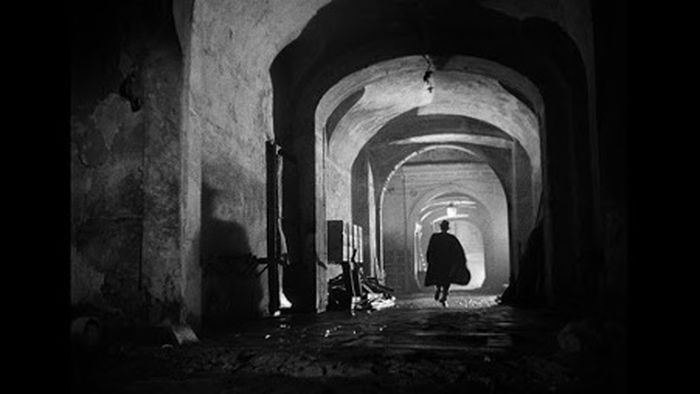Saint Maud review — A24′s most recent psychological horror is queer in more ways than one
A24′s latest horror venture further cements the studio’s niche for the avant-garde, enigmatic, and downright bewildering, writes Guy Webster.
In recent years, the production company A24 has become a connoisseur of the horror film genre. From Ari Aster’s Hereditary (2017), to Robert Egger’s The Lighthouse (2019), or David Lowery’s A Ghost Story (2017), the alternative label has firmly aligned itself with a new age in the horror genre. Any horror film that boasts its label consequently faces a set of well-worn expectations. After all, these are the films that galvanised terms like ’smart horror’, or ’post-horror’. They are philosophical, metaphysical ruminations for the thinking man – coincidentally, they are mostly made by men. Saint Maud (2020), the company’s newest venture into the horror genre, seemed to face an uphill battle in the shadow cast by this recent history. But with its surreal take on religious possession and its decidedly queer gaze, Maud is distinct. And, ultimately, it adds another tier to this new age in horror.
The film gets its name from Maud, a hospice nurse who has recently found God after a traumatic experience. With her newly minted religious beliefs in tow, she becomes a palliative carer for Amanda Nichols, a former choreographer with Stage 4 lymphoma. The nature of this initial trauma, like most of the film, is shrouded in the terrifying allure of ambiguity. There is the momentary flash of a blood-stained hospital bed beneath fluorescent lights, or a convulsing body, and tense close-up of Maud covered in gore with her head resting in her shaking hands. These shots, appearing in the first five minutes of the film, introduce us to a story that heightens its horrors as a result of its reticence to answer our questions – of which we have many.
“Glass continues to blur the lines between some very thorny binaries; the first being that which divides the sensuality of sublime religious experience from queer desire.”
One of the most intriguing questions comes as a result of Maud and Nichols’ burgeoning relationship. Nichols, described as ‘positively Norma Desmond-like’, handles her terminal illness with hedonistic abandon. Played with nuance by Jennifer Ehle, Nichols’ terminal lifestyle – which includes recreational drugs and a seemingly never-ending supply of alcohol – is at odds with the piety of Maud’s Roman Catholic beliefs. Early on, their connection is fuelled by Maud’s desire to evangelise Nichols, to lead her down the garden path to redemption. Yet, when Maud finds Nichols with a female escort, the religiosity that fuels Maud’s interest is put into question. It is here that we see the power of Rose Glass’ writing and Morfydd Clark’s acting (who plays Maud).
As the relationship between Maud and Nichols develops, Glass continues to blur the lines between some very thorny binaries; the first being that which divides the sensuality of sublime religious experience from queer desire. At one point, Maud and Nichols appear to share a religious experience expressed in notably sexual, and sapphic, terms. Lying back on a couch, Maud is possessed by an inscrutable religious presence that elicits an experience akin to the orgasmic. Maud has already described these experiences previously ‘like He’, referring to God, ‘is physically in me’. Now, Nichols seems to join her, lying back as she feigns a similarly religious sensuality and reaches her hand out to Maud.
Throughout the film, the nature of the pair’s relationship is never made explicit. Nor is the nature of this possessive presence. Are we to believe that Maud is actually possessed by some kind of biblical,or demonic, force, or is it the symptom of repressed desire? Is Maud the victim of some unspecified trauma she experienced as a nurse, as well as restrictive religious views, or is she empowered by a divine purpose?
As the film continues, Glass moves us away from any sense of reality that might provide answers to these questions. Fluorescent CGI angel wings, sudden facial distortions and levitations lit by burning skies provide a visual feast that denies closure and builds suspense with foreboding allure. Anchoring these surreal moments with corporeal horror, Glass propels us forward, wincing in anticipation of the film’s tense conclusion. All the while, cinematographer Ben Fordesman ensures that we are locked, inescapably, into Maud’s perspective. And so, it is with a sense of the tragic, as well as the inevitable, that we come to the film’s end. The mystery that Glass has created – in her debut film, no less – gives the story, and its characters, nuance that ultimately heighten its horrors. In the end, perhaps, there is no logic and no answer to the pain both Maud and Nichols face, nor in the means by which they empower themselves in light of it.
Saint Maud premiers in UK cinemas on the 9th of October.
 News / Uni Scout and Guide Club affirms trans inclusion 12 December 2025
News / Uni Scout and Guide Club affirms trans inclusion 12 December 2025 News / Pembroke to convert listed office building into accom9 December 2025
News / Pembroke to convert listed office building into accom9 December 2025 Features / Searching for community in queer Cambridge10 December 2025
Features / Searching for community in queer Cambridge10 December 2025 News / Uni redundancy consultation ‘falls short of legal duties’, unions say6 December 2025
News / Uni redundancy consultation ‘falls short of legal duties’, unions say6 December 2025 News / Gov declares £31m bus investment for Cambridge8 December 2025
News / Gov declares £31m bus investment for Cambridge8 December 2025









